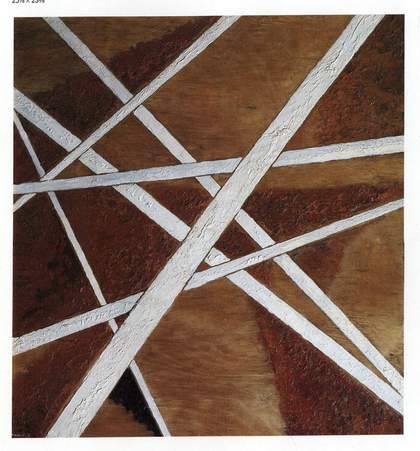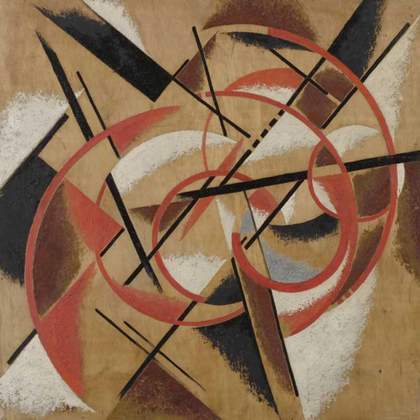This major exhibition explores the work and relationship of two of the Russian avant-garde's most important artists – Aleksandr Rodchenko (1891–1956) and Liubov Popova (1889–1924). The exhibition starts in 1917, the year of the October Revolution, and shows how the two artists shaped the future of Russian art. Rodchenko and Popova were the key figures of the Constructivist movement, rejecting the idea of 'art for art's sake' in favour of an art that participated in the revolution’s transformation of everyday life.
With over 350 objects, the exhibition charts the evolution of these artists’ careers, from abstract painting to graphic design, including advertising posters, theatre sets, costume designs and books. Iconic works, such as posters for the classic film Battleship Potemkin directed by Sergei Eisenstein in 1925, are in the exhibition. Highlights also include the two artists’ breathtaking array of utopian abstract paintings produced between 1917 and 1921, featuring their trademark colourful geometric shapes. There are works from the groundbreaking 1921 exhibition 5x5=25, in which the artists collaborated with their colleagues Aleksandra Ekster, Aleksandr Vesnin and Varvara Stepanova to produce works including Rodchenko's famous monochromatic paintings Pure Red Colour, Pure Yellow Colour, and Pure Blue Colour. The exhibition shows how both artists had a huge influence on twentieth-century media and cinema, and includes films on which Rodchenko worked. There is also a reconstruction of Rodchenko’s famous Workers’ Club 1925, made for the International Exhibition of Modern Decorative and Industrial Arts in Paris to demonstrate the Soviet Union’s social equality and progressive modernity.
Rodchenko & Popova curator introduction


